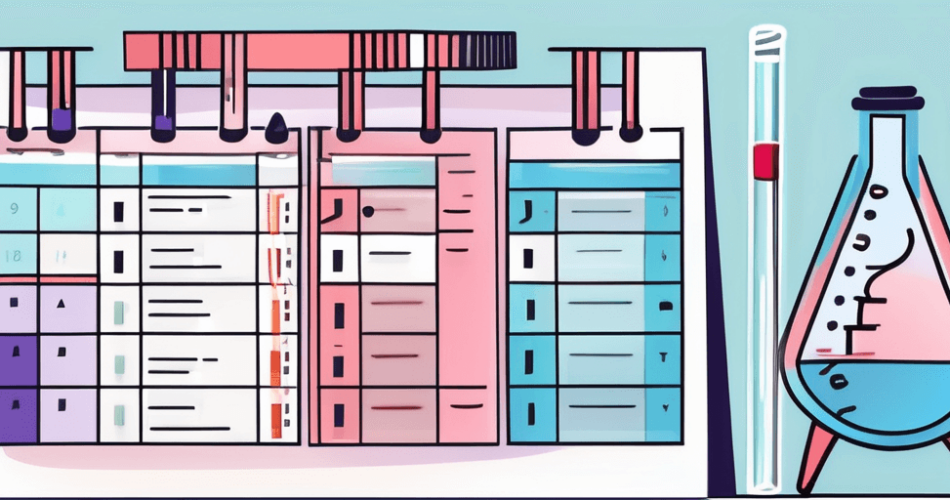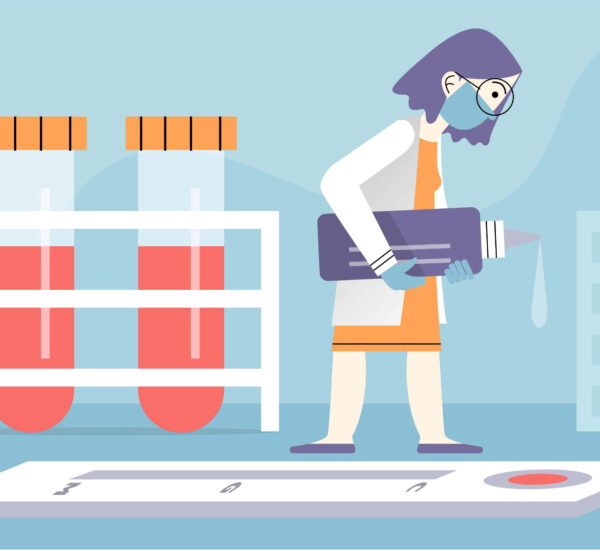Understanding Human Immunodeficiency Virus or HIV as a health threat is important for the public. This virus can target the immune system of individuals, which if not managed immediately can lead to other health complications. In that case, practicing self-awareness with self-test kits can help. However, before anything else, the idea of the HIV window period should be clear for proper testing of the viral load of HIV.
In this blog, we’ll discuss the crucial details of the HIV window period and its role in proper HIV testing. Find out more to properly manage HIV. Let’s begin!
Defining the Window Period of HIV

When a person becomes infected with HIV, the immune system responds by producing antibodies to fight the virus. However, it takes time for these antibodies to develop and reach detectable levels. The HIV window period refers to the time between the initial HIV infection and when a test can accurately detect the presence of HIV antibodies in the bloodstream. During this period, the virus replicates and antibodies develop.
With that, it is important to note that the HIV window period is an essential time frame that people must consider. It helps individuals to identify the correct time for taking the HIV test to confirm one’s HIV status, and to protect the public from possible exposure and widespread exposure.
However, it is important to note that the HIV window period is not the same for all types of tests. For example, a combination test, which detects both HIV antibodies and antigens, has a shorter window period compared to antibody tests that only detect antibodies. This difference in window periods underscores the importance of using the most appropriate type of HIV test based on the individual’s risk factors and the time since HIV exposure.
Types of HIV Tests and Their Window Periods

As mentioned, the HIV window period varies depending on the certain type of HIV test used. It is important to identify and understand this time frame as it can affect the HIV test results of patients. Thus, showing how HIV screening can be tricky when certain tests are incorrectly used.
Different types of HIV tests have varying window periods. Most commonly used tests, such as HIV rapid or antibody tests, have a window period of approximately 3 to 12 weeks. However, laboratory tests, such as nucleic acid test (NAT) and HIV antigens, can detect HIV much earlier, reducing the window period to a few days.
Here’s a simple list for a better understanding of the HIV window period per HIV test
| HIV Test Types | HIV Window Period |
| Antibody Rapid Test | 3 to 12 weeks |
| Combination Test | 2 to 6 weeks |
| Antigen Test | 2 to 4 weeks |
| Nucleic Acid Tests | 2 to 4 weeks |
It’s important to note that the timing of testing plays a crucial role in accurate diagnosis. While some tests may offer early detection, healthcare providers often recommend a second test after a certain period to confirm results and ensure reliability. Understanding the interplay of these factors is key to effective HIV testing and diagnosis.
Importance of the Window Period in HIV Testing
Recognizing the HIV window period has a crucial connection in HIV testing. When individuals try to undergo an HIV test within the mentioned period, it can affect the test results. The most likely outcome is false negatives, which gives a false sense of security for individuals. At the same time, it can lead to inaccurate results and delays in getting appropriate care.
In short, understanding and respecting the HIV window period is essential in promoting early detection, effective treatment, and prevention efforts in combating the spread of HIV.
Recommended Testing Frequencies
It is recommended that individuals undergo regular HIV testing, especially if they engage in behaviors that increase their risk of infection. Testing frequency may vary depending on an individual’s risk factors. For example, individuals who have multiple sexual partners or engage in high-risk sexual behaviors may need to be tested more frequently than those who have lower-risk profiles.
Moreover, individuals who are exposed to drug use, and other risk factors must always consider frequent testing. By getting tested regularly, individuals can ensure early detection of HIV infection, which allows for timely intervention and management.
Special Considerations for High-Risk Groups
High-risk groups, such as bisexual men who have sex with men, people who inject drugs, and individuals with multiple sexual partners, may require more frequent testing due to their increased risk of HIV transmission. Access to comprehensive sexual health services, including HIV testing and counseling, is crucial for these populations.
Understanding False Positives and Negatives

False positives and negatives can occur during the window period. A false positive is when a test incorrectly indicates the presence of HIV, while a false negative is when a test incorrectly indicates the absence of HIV. These errors can cause emotional distress and may lead to unnecessary anxiety or delayed treatment.
Healthcare providers play a crucial role in interpreting test results and providing counseling to individuals undergoing HIV testing. Individuals need to seek testing in reputable healthcare facilities that follow standard protocols to minimize the risk of errors and ensure accurate results.
Misconceptions About the HIV Window Period
There are several misconceptions surrounding the HIV window period that can cause confusion and misinformation. It is important to debunk these myths to ensure an accurate understanding of HIV testing.
Common Myths Debunked
Myth 1: Negative Result Equates to Not Infected
One common myth is that a negative test result during the window period means a person is not infected with HIV. In reality, it simply means that the antibodies have not yet reached detectable levels. Another myth is that a positive test result during the window period is always accurate, but it can be a false positive due to cross-reactivity with other antibodies.
Myth 2: Universal Window Period
Another myth is that the window period is the same for everyone, regardless of individual factors. In fact, the length of the window period can vary depending on factors such as the type of test used, the individual’s immune response, and the stage of HIV infection.
Myth 3: Window Period Entails Showing of Symptoms
Moreover, people often have this misconception of the HIV window period involving various symptoms or physical manifestations, but it is primarily a period after HIV infection when a person may test negative despite being infected.
Individuals need to educate themselves about the HIV window period and consult healthcare providers for accurate information and guidance. By understanding the nuances of HIV testing and debunking common myths, individuals can make informed decisions about their sexual health and seek appropriate care when needed.
Frequently Asked Questions
How long does the HIV window period last?
The length of the window period can vary depending on individual factors such as the type of test used and a person’s immune response. It can range from a few weeks to a few months.
Is it safe to have sexual intercourse within the HIV window period?
Despite not having a positive result in your test kit, it doesn’t mean one’s health status is clear of HIV antibodies. It is advisable to avoid unprotected sex to not pass on the condition to other people. At the same time, using and sharing needles for drug administration, and other modes of transmission for HIV should be prohibited.
Can symptoms appear during the HIV window period?
While some individuals may experience flu-like symptoms shortly after HIV infection, it is crucial to note that symptoms are not a reliable indicator during the window period. Testing is the only way to confirm HIV status accurately. Consulting healthcare providers and getting tested regularly can help in early detection and timely management of HIV.
How accurate are HIV tests during the window period?
HIV tests are most reliable after the window period when antibodies are present in detectable levels. Testing too early may yield false negative results. Try to follow healthcare providers’ guidelines for every type of HIV test kit for better testing frequency and timing. With that, patients can begin a suitable treatment plan to manage their HIV promptly.
Is there a way to shorten the HIV window period?
Research is ongoing to develop faster and more sensitive tests to shorten the window period. In the meantime, individuals should follow safe sex practices, get tested regularly, and seek guidance from healthcare providers for accurate information on HIV testing.
Where to go for testing after the HIV window period ends?
If the patient prefers to use self-test kits, they can acquire the tests via pharmacies or online accredited platforms. Meanwhile, self-test kits are also available in community health centers, where local health workers can guide patients. However, if people seek lab tests, either for a first or second test, it’s best to visit the nearest testing sites like medical clinics in the area.
Conclusion
Understanding the HIV window period is essential in determining the optimal time to test for accurate results. Recognizing this period allows people to make the right choices for their health. That involves knowing when to seek detection of HIV and how to accomplish that aspect.
Whether or not you’ve been exposed to HIV through different risk factors, early detection is a must to prevent the spread of HIV and to manage your condition.



